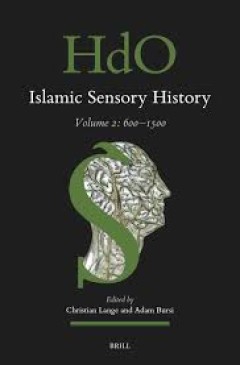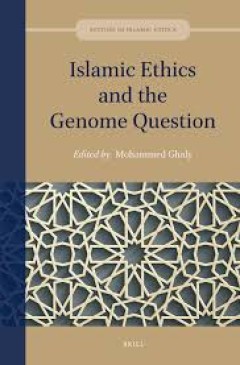Filter by

Jesuits in the North American Colonies and the United States : Faith, Conflic…
From Eusebio Kino to Daniel Berrigan, and from colonial New England to contemporary Seattle, Jesuits have built and disrupted institutions in ways that have fundamentally shaped the Catholic Church and American society. As Catherine O’Donnell demonstrates, Jesuits in French, Spanish, and British colonies were both evangelists and agents of empire. John Carroll envisioned an American church in…
- Edition
- -
- ISBN/ISSN
- 978-90-04-43317-5
- Collation
- vi, 112 pp.
- Series Title
- Brill Research Perspectives in Jesuit Studies
- Call Number
- -

Jesuits in Spanish America before the Suppression : Organization and Demograp…
From the late sixteenth century until their expulsion in 1767, members of the Society of Jesus played an important role in the urban life of Spanish America and as administrators of frontier missions. This study examines the organization of the Society of Jesus in Spanish America in large provinces, as well as the different urban institutions such as colegios and frontier missions. It outlines …
- Edition
- -
- ISBN/ISSN
- 978-90-04-46034-8
- Collation
- vi, 108 pp.: 15 color ills., 4 maps, 22 tables
- Series Title
- Brill Research Perspectives in Jesuit Studies
- Call Number
- -

Jesuits in Africa : A Historical Narrative from Ignatius of Loyola to Pedro A…
Jesuits have been in Africa since the founding of their order, yet their history there remains poorly researched. Although scholars have begun to focus on specific regions such as Congo, Ethiopia, and Zimbabwe, a comprehensive picture of the entire Jesuit experience on the continent has hitherto been lacking. In a condensed yet accessible way, Jesuits in Africa fills that lacuna. Narrating the …
- Edition
- -
- ISBN/ISSN
- 978-90-04-51285-6
- Collation
- vi, 115 pp.
- Series Title
- Brill Research Perspectives in Jesuit Studies
- Call Number
- -

Jesuit Missions in Coastal and South India (1543–1773) : Between Mission an…
Jesuit missions in coastal and South India were among the first foundations of the Society of Jesus in the world. They represented models of apostolic action imitated, debated and reformulated in other parts of the world. This book traces the history of the Jesuit missionary activities in the early modern period and shows how the Jesuits navigated European colonial interests and local conversio…
- Edition
- -
- ISBN/ISSN
- 978-90-04-72739-7
- Collation
- x, 134 pp.
- Series Title
- Brill Research Perspectives in Jesuit Studies
- Call Number
- -

Jan Verschueren's Description of Yéi-Nan Culture : Extracted from the Posthu…
Joannis Cornelis Verschueren (1905-1970) worked as a Roman Catholic missionary in southern Irian from 1931 until 1970. In the 1950s he wrote a number of papers on the Yéi. These papers, based on older field notes and a research trip through the area, are recapitulated in this volume. Verschueren provides genuine inside information and his data are new and authentic. The four papers in this vol…
- Edition
- -
- ISBN/ISSN
- 978-90-04-28730-3
- Collation
- xiii, 107 pp.
- Series Title
- Verhandelingen van het Koninklijk Instituut voor Taal-, Land- en Volkenkunde, Volume: 99
- Call Number
- -

Jade-Carving Chisel and Luminous Ocean : Selected Essays by Jao Tsung-i on Li…
Jao Tsung-i’s scholarship illuminated the development of classical Chinese literature from antiquity through the end of the Qing dynasty. In this volume, eight interviews with and essays by Jao are translated faithfully into English, giving a sampling of his diverse insights into literature and its broader significance. Topics range from the religious beliefs underpinning the earliest Chinese…
- Edition
- -
- ISBN/ISSN
- 978-90-04-52356-2
- Collation
- xvi, 272 pp.
- Series Title
- Collected Works of Jao Tsung-i, Volume: 4
- Call Number
- -

Islamic States in Java 1500-1700 : Eight Dutch Books and Articles by Dr. H.J.…
- Edition
- -
- ISBN/ISSN
- 978-90-04-28700-6
- Collation
- vii, 213 pp.
- Series Title
- Verhandelingen van het Koninklijk Instituut voor Taal-, Land- en Volkenkunde, Volume: 70
- Call Number
- -
- Edition
- -
- ISBN/ISSN
- 978-90-04-28700-6
- Collation
- vii, 213 pp.
- Series Title
- Verhandelingen van het Koninklijk Instituut voor Taal-, Land- en Volkenkunde, Volume: 70
- Call Number
- -

Islamic Sensory History : Volume 2: 600–1500
Islamic Sensory History, Volume 2: 600–1500 presents a selection of texts translated into English from Arabic and Persian. These selected texts all offer illustrative engagements with issues related to the sensorium in different times, places, and social milieus throughout the early and medieval history of Islamic societies. Each chapter is prefaced by an introductory essay by the translator,…
- Edition
- -
- ISBN/ISSN
- 978-90-04-51593-2
- Collation
- xxii, 594 pp.
- Series Title
- Handbook of Oriental Studies. Section 1 The Near and Middle East, Volume: 182.2
- Call Number
- -

Islamic Ethics and the Trusteeship Paradigm: Taha Abderrahmane’s Philosophy…
Islamic Ethics and the Trusteeship Paradigm explores the emerging ethical theory of the trusteeship paradigm as developed by the Moroccan philosopher Taha Abderrahmane (b. 1944). The volume, with contributions in English and Arabic, examines the development of this modern Islamic theory of ethics and how it permeates various disciplines: philosophy, theology, legal theory, Sufism, moral theory,…
- Edition
- -
- ISBN/ISSN
- 978-90-04-43835-4
- Collation
- xviii, 364 pp.
- Series Title
- -
- Call Number
- -

Islamic Ethics and the Genome Question
Islamic Ethics and the Genome Question is one of the very first academic works, which examine the field of genomics from an Islamic perspective. This twelve-chapter volume presents the results from a pioneering seminar held in 2017 at the Research Center for Islamic Legislation & Ethics, College of Islamic Studies, Hamad Bin Khalifa University, in Qatar. The contributors to this volume, coming …
- Edition
- -
- ISBN/ISSN
- 978-90-04-39213-7
- Collation
- xiv, 340 pp.
- Series Title
- Studies in Islamic Ethics, Volume: 1
- Call Number
- -
 Computer Science, Information & General Works
Computer Science, Information & General Works  Philosophy & Psychology
Philosophy & Psychology  Religion
Religion  Social Sciences
Social Sciences  Language
Language  Pure Science
Pure Science  Applied Sciences
Applied Sciences  Art & Recreation
Art & Recreation  Literature
Literature  History & Geography
History & Geography